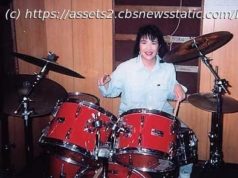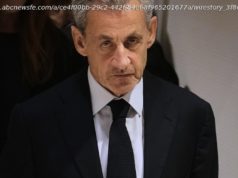Unwilling to yield, President Donald Trump and China’s government escalated their trade clash Friday, with Beijing vowing to „counterattack with great strength“ if Trump follows through on…
WASHINGTON (AP) – Unwilling to yield, President Donald Trump and China’s government escalated their trade clash Friday, with Beijing vowing to „counterattack with great strength“ if Trump follows through on threats to impose tariffs on an additional $100 billion in Chinese goods.
Trump made his out-of-the-blue move when China threatened to retaliate for the first round of tariffs planned by the United States. But for someone who has long fashioned himself as a master negotiator, Trump left it unclear whether he was bluffing or willing to enter a protracted trade war pitting the world’s two biggest economies against each other, with steep consequences for consumers, businesses and an already shaken stock market.
„They aren’t going to bully him into backing down,“ said Stephen Moore, a former Trump campaign adviser who is now a visiting fellow at the Heritage Foundation. He said the Chinese „are going to have to make concessions – period.“
The White House sent mixed signals on Friday as financial markets slid from investor concern about a significant trade fight. Treasury Secretary Steven Mnuchin told CNBC he was „cautiously optimistic“ that the U. S. and China could reach an agreement before any tariffs are implemented but added, „there is the potential of a trade war.“
White House economic adviser Larry Kudlow told reporters the U. S. was „not in a trade war,“ adding, „China is the problem. Blame China, not Trump.“
Trump’s latest proposal intensified what was already shaping up to be the biggest trade battle for more than a half century. The U. S. bought more than $500 billion in goods from China last year and now is planning or considering penalties on some $150 billion of those imports. The U. S. sold about $130 billion in goods to China in 2017 and faces a potentially devastating hit to its market there if China responds in kind.
Global financial markets have fallen sharply as the world’s two biggest economies squared off – the Dow Jones industrial average sank 572 points Friday.
Trump told advisers Thursday he was unhappy with China’s decision to tax $50 billion in American products, including soybeans and small aircraft, in response to a U. S. move this week to impose tariffs on $50 billion in Chinese goods.
Rather than waiting weeks for the U. S. tariffs to be implemented, Trump backed a plan by Robert Lighthizer, his trade representative, and was encouraged by Peter Navarro, a top White House trade adviser, to seek the enhanced tariffs, upping the ante.
White House chief of staff John Kelly and Mnuchin concurred with the move, as did Kudlow, who traveled with the president to West Virginia.
China said negotiations were impossible under the circumstances but Trump officials said the president and his team remained in contact with President Xi Jinping and expressed hope to him of resolving the dispute through talks. White House press secretary Sarah Huckabee Sanders said the two sides remained in „routine contact.“
In Beijing, a Commerce Ministry spokesman said China doesn’t want a trade war – but isn’t afraid to fight one.
„If the U. S. side announces the list of products for $100 billion in tariffs, the Chinese side has fully prepared and will without hesitation counterattack with great strength,“ spokesman Gao Feng said. He gave no indication what measures Beijing might take.
Trump has also pushed for a crackdown on China’s theft of U. S. intellectual property, and he criticized the World Trade Organization, an arbiter of trade disputes, in a tweet Friday for allegedly favoring China. Trump asserted the WTO gives the Asian superpower „tremendous perks and advantages, especially over the U. S.“
U. S. officials have played down the threat of a broader trade dispute, saying a negotiated outcome is still possible. But economists warn that the tit-for-tat moves bear the hallmarks of a classic trade rift that could keep growing. Worry is intensifying among Republicans, who traditionally have favored liberalized trade.
„The administration needs to be thinking about the unintended consequences and what are those ripple effects, those domino effects, and what are the retaliatory actions that are likely to be taken,“ said South Dakota Sen. John Thune, the Senate’s No. 3 Republican, in an interview with KDLT-TV in Sioux Falls.
The standoff over the trade penalties began last month when the U. S. slapped tariffs on imported steel and aluminum. China countered by announcing tariffs on $3 billion worth of U. S. products. The next day, the United States proposed the $50 billion in duties on Chinese imports, and Beijing lashed back within hours with a threat of further tariffs of its own.
Further escalation could be in the offing. The U. S. Treasury is working on plans to restrict Chinese technology investments in the United States. And there’s talk that the U. S. could also put limits on visas for Chinese who want to visit or study in this country.
Kudlow told reporters the U. S. may provide a list of suggestions to China „as to what we would like to have come out of this,“ and those issues were under discussion.
„Negotiations are better than tariffs,“ Kudlow said. „A solution in the next three months would be better than anything. I think that’s eminently doable.“ He added: „But Trump is not just using tariffs as a negotiating card. He said that to me.“
For Trump, the dispute runs the risk of blunting the economic benefits of his tax overhaul, which is at the center of congressional Republicans‘ case for voters to keep them in power in the 2018 mid-term elections. China’s retaliation so far has targeted Midwest farmers, including growers of soybeans, corn and wheat. That could specifically harm core Trump supporters.
„With respect to the Trump administration, its political success will rise and fall with the economy,“ Kudlow said.






